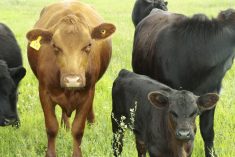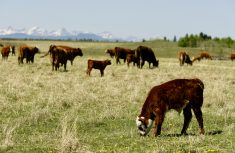When I visit with cow-calf operators, I am encouraged to hear that most have a good understanding of the importance of proper mineral nutrition, particularly as it pertains to the reproductive success of the herd. However, when questioned about specifics of what mineral is required for what function or how much of a given mineral is required, the typical response is: “I leave that to my nutritionist or veterinarian.” In fact, I find that many producers do not even look at the mineral tag and simply buy the recommended product. This is understandable as more than likely they paid for this advice. However, would you buy a major piece of equipment without some understanding of how it operates?
What I want to do with this column is to review a typical mineral supplement tag and highlight the sections that one needs to understand when evaluating the nutritional value of that mineral supplement.
The first thing that should hit your eye when reading the tag is the name of the mineral, which in addition to the manufacturer’s name, likely includes a ratio such as 1:1 or 2:1. This ratio refers to the ratio of calcium to phosphorus in the mineral. It has nothing to do with the amount of either mineral, just the ratio of the two.
Read Also

Canadian Beef Check-Off Agency reports on investments and activities
The check-off agency’s work behind the scenes is what ensures cattle check-off dollars are invested wisely, accounted for transparently and deliver measurable value back to producers and importers.
The concentration of a given mineral is found further down the tag under “Guaranteed Analysis.” For example, a 2:1 tag might list calcium at 18 per cent and phosphorus at nine per cent. In other words, there is twice as much calcium as phosphorus by weight. Both calcium and phosphorus are macro minerals that are required by the animal in relatively large amounts (i.e. grams per day). They are essential for growth, particularly skeletal development, reproduction and milk production as well as playing a role in health (i.e. an imbalance in calcium intake can lead to milk fever at calving). Other minerals that fall into this category include magnesium, potassium and sulphur, all of which you will find listed as a percentage of the actual mineral weight. Magnesium is particularly important, as a deficiency can lead to a variety of nervous disorders including grass tetany or staggers.
Reading further down the tag in the same section, you will find a listing of the trace minerals. These minerals are required in very small amounts (i.e. milligrams per day) but are just as important to health and performance as the macro minerals. Examples include copper, zinc, manganese, selenium, iodine and cobalt. These minerals are involved in reproductive function (i.e. copper, zinc and selenium), skeletal structure (zinc, copper and manganese), energy metabolism (iodine), growth (copper, zinc) and maintenance of normal muscle structure and function (selenium). In contrast to macro minerals, the concentration of a given trace mineral is expressed as milligrams per kilogram (mg/kg) of mineral supplement. For example, copper might be listed at 3,000 mg/kg or zinc at 5,000 mg/kg. Be advised that mg/kg is the same as parts per million (ppm).
Cobalt stands out from the rest of the trace minerals in that there is no cobalt requirement for the animal per se; rather it is included in cattle diets to meet the need of the rumen bacteria for the synthesis of vitamin B12. Supplementation helps to maintain an active rumen bacterial population; as well, vitamin B12 synthesized in the rumen ultimately serves to meet the animal’s requirement for this important vitamin.
In terms of where you find selenium listed on a tag, it is also a bit of an exception. Mineral manufacturers are required to list the selenium concentration at the top of the tag so it stands out and is easy to locate. This is because selenium, while required in minuscule amounts, is also toxic if over-consumed. The latter situation is not uncommon as selenium is added to a variety of supplements, minerals and lick tubs/blocks and can be found in high levels in some plants. When featured prominently at the top of the tag, producers and their advisors are alerted to its concentration and can evaluate how this mineral will contribute to total selenium intake. Also listed prominently at the top of the tag are the concentrations, if any, of specific feed additives (i.e. ionophores and/or antibiotics).
The final listing under the “Guaranteed Analysis” section is the vitamin concentration, particularly vitamins A, D and E. These fat-soluble vitamins are required by all classes of cattle. Like the macro and trace minerals, they are important in many aspects of normal body function including vision (vitamin A), bone growth (vitamin D), reproduction (vitamin A), stress and immune response (vitamin E). The concentration of a specific vitamin is expressed as the number of international units per kilogram of supplement (IU/kg). This term can be confusing as vitamins come in different forms with different biological activities and the weight of one IU of vitamin A, for example, will depend on the form of vitamin A used in the formulation. What is important is that one knows the concentration (i.e. IU/kg) of each vitamin in the supplement and ensures adequate intake to meet requirements.
Looking further down the tag one comes to expected consumption or feeding directions. In my next column, I will look at how we can use this information along with the concentration of specific minerals and vitamins to evaluate how a given mineral supplement may or may not fit a given production situation.

















